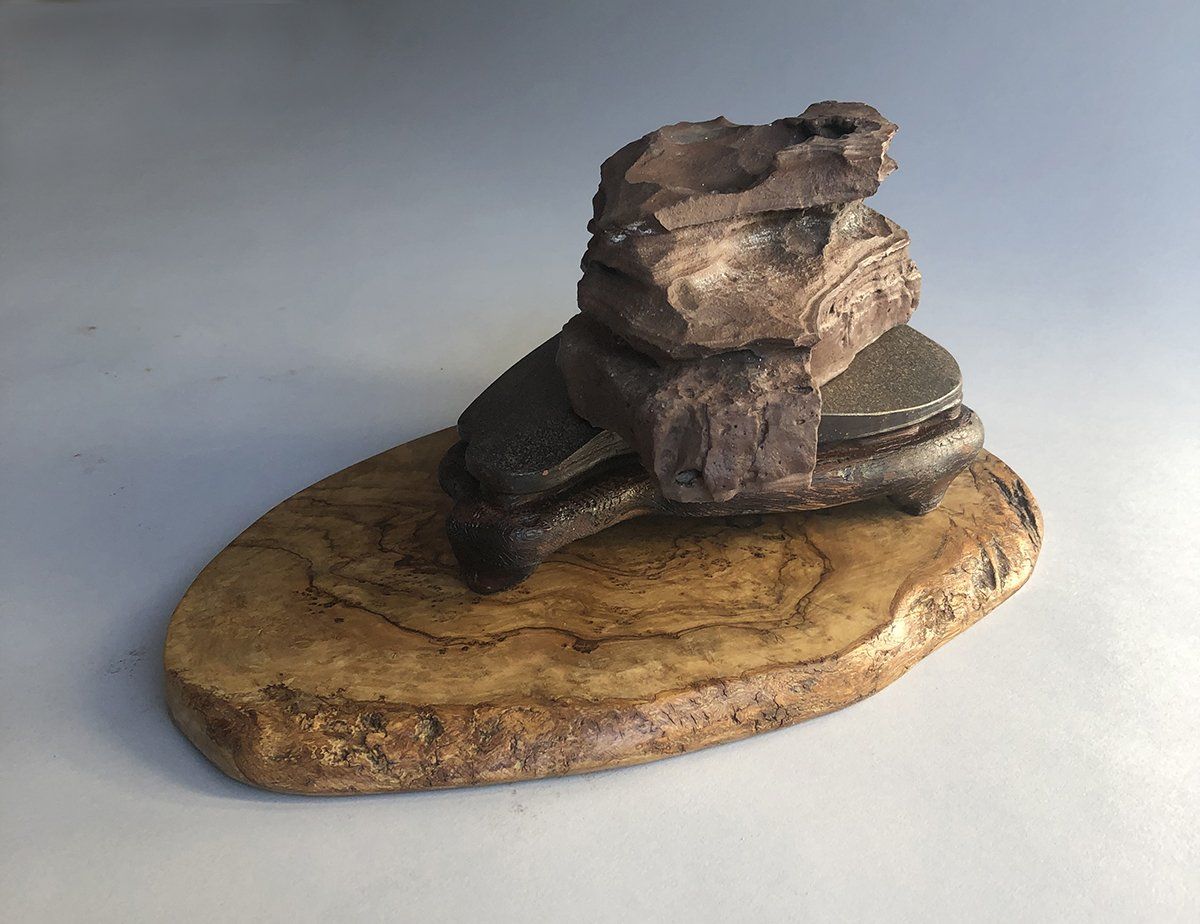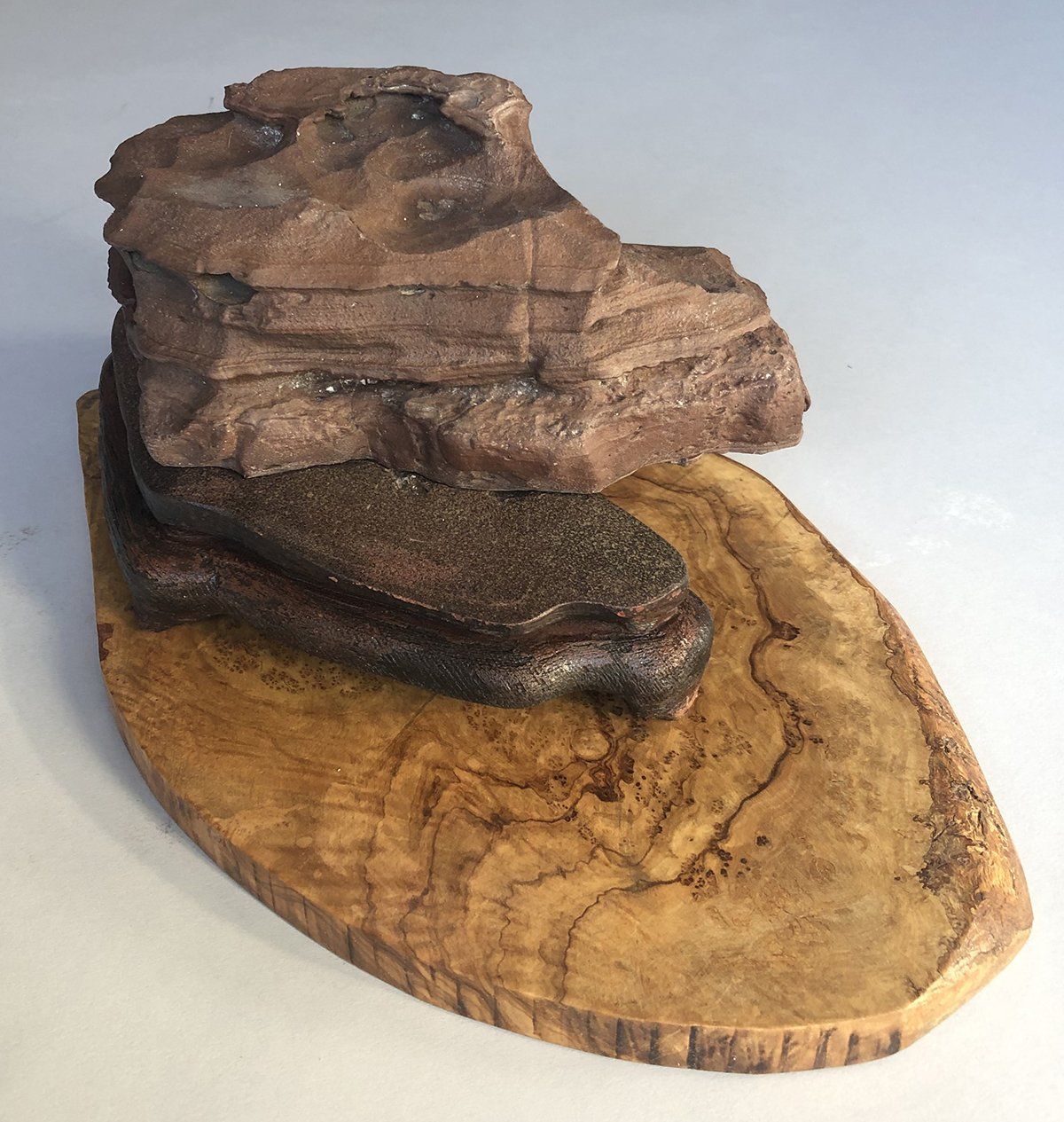
Slide title
Button
Slide title
Write your caption hereButton
Slide title
Write your caption hereButton
Untitled
By Richard Turner
This California Yuha Desert landscape stone is mounted on a found Chinese base. It was an inexpensive, temporary base carved out of soft wood for another stone that, once purchased, was probably fit with a more finely crafted base. This stone is set on the base in a deliberately precarious position with the intention of suggesting the idea that stones collected in North America do not necessarily fit neatly into Chinese or Japanese forms of viewing stone display. In places the stone's contours follow those of the base. Elsewhere the stone hangs out over the edge of the base as if it had been shifted by an earthquake—a not uncommon occurrence in California. The infill around the stone, which is painted resin, references the granular matter and rubble that one typically sees sloping away from the base of a desert mesa. The layers of the base continue and extend the layers and ledges of the stone. The rough texture of the repurposed base remains unmodified, a reminder of its cheap, market-driven aesthetic. The stone and base rest on a repurposed cutting board. The patterns in the slab of wood suggest an aerial view of the desert floor. The scale of this bird's-eye view is disproportionate to the scale of the stone above. Imagining oneself standing atop the stone and peering down over the edge suggests the sense of vertigo that one might experience peering over the edge of a precipice into a deep gorge.
Mounted on this dynamic base, the stone does not have an obvious front or back. A glimpse of the overhanging portion of the stone on the right distracts from a view of the "front". The rugged features of the stone and its protrusion from the contours of the base make a view from the "back" unsettling. Looking at the stone from one end, it can easily be seen as a craggy-browed beast, its legs provided by the Chinese base.
The deliberately awkward placement of the stone (which both fits and does not fit) on the unrefined Chinese base coupled with the aforementioned disequilibrium compel me to ask if this contemporary display successfully serves the stone or if it encumbers it with unnecessary visual and conceptual baggage that only serve as distractions. One answer to that question would be to mount the stone in a more conventional base. Let us know what you think.

